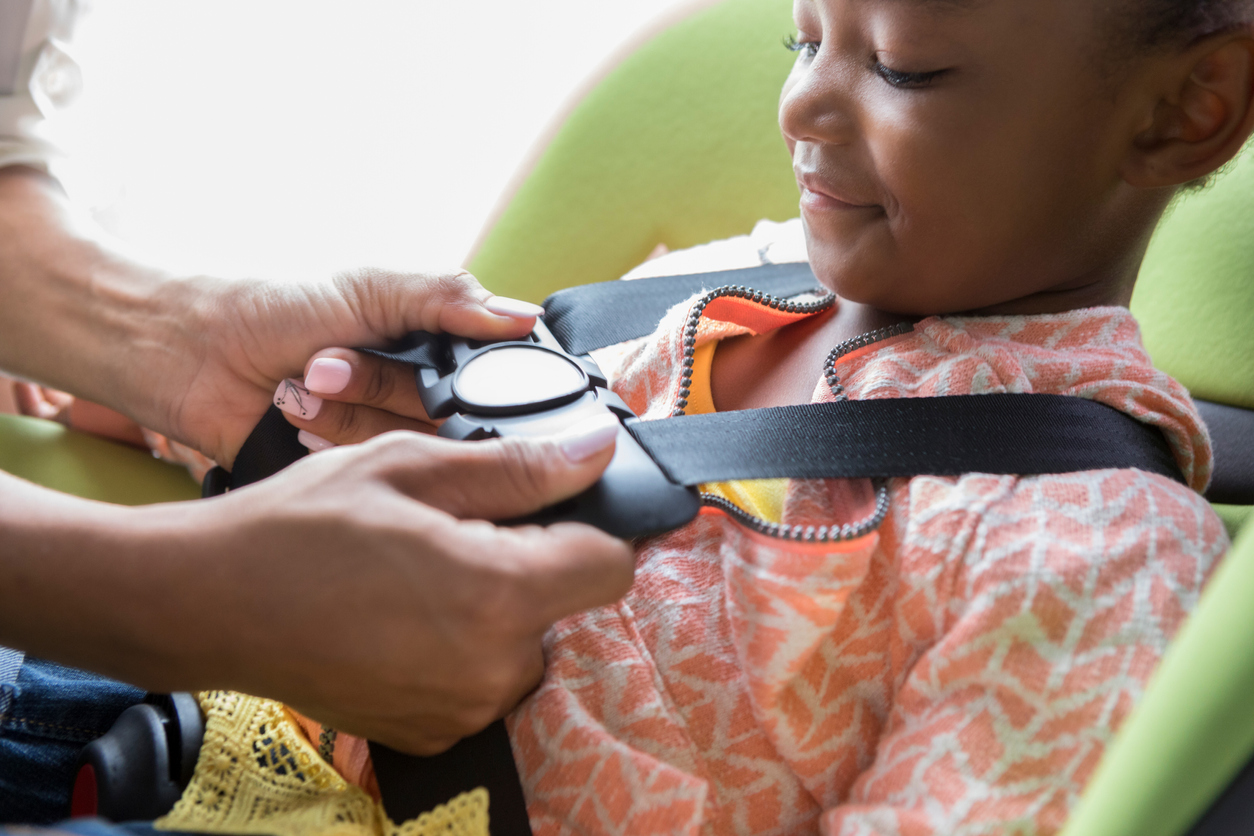Georgia Car Seat and Booster Seat Laws: Ensuring Your Child’s Safety in 2025
We know your child’s safety on Georgia’s roads is a top priority. It is for us, too. That’s why Montlick is so passionate about spreading the word on correct and safe use of car and booster seats is a key part of our firm’s work. Properly using safety seats not only complies with Georgia state and local laws, but can also save your child’s life in the event of a crash.
Understanding Georgia’s Car Seat and Booster Seat Laws
In Georgia, the law requires that all children under the age of 8 must be properly restrained in an appropriate child passenger safety seat or booster seat. The particular kind of seat each child needs is based on their height, weight, and age.
Children under 8 years old whose height is less than 57 inches are required to ride in the back seat of the vehicle.
Which Car Seat or Booster Seat Is Right for Your Child?
- Rear-Facing Car Seats: Infants should always ride in a rear-facing infant car seat, in the back seat.
- Forward-Facing Car Seats: When children’s height or weight outgrows a rear-facing seat, it’s time to transition to a forward-facing car seat with a harness, used in the back seat. All child passengers should be secured in the car’s back seat. (https://consumer.georgia.gov/child-car-seats)
- Booster Seats: Children under 8 who have outgrown their forward-facing car seats should use a booster seat until they are at least 4’9″ (57 inches) tall.
- Seat Belts: Children aged 8 and above or those taller than 4’9″ can use the vehicle’s seat belt, provided it fits properly.
The Importance of Proper Restraint Use
According to the National Highway Traffic Safety Administration (NHTSA), car accidents are a leading cause of death for children ages 1 to 13. In 2022 alone, an average of three children under 13 were killed, and 429 were injured daily in vehicles. Alarmingly, a significant number of child safety seats are improperly installed or used, diminishing their effectiveness.
Tips for Ensuring Car Seat Safety
- Choose the Right Seat: Choose a car seat or booster that fits your child’s current size and age and is compatible with your vehicle.
- Follow Manufacturer Guidelines: Always adhere to the car seat manufacturer’s instructions for installation and usage.
- Positioning: The back seat is the safest place for children under 13.
- Regular Inspections: Have your car seat inspected by certified technicians to ensure correct installation.
- Stay Informed: Regularly check for recalls or safety notices related to your child’s car seat model.
How Booster Seats Improve Safety
In young children, booster seats have been shown to reduce the risk of severe damage to the brain, liver, spinal cord, and spleen in the event of an accident. With a booster seat, young children are seated in a position so that their seatbelt is effective in an accident. Alternatively, young children are at serious risk without a booster seat. If you have questions about your child’s car or booster seat, speak to a child seat safety technician in your area.
Common Car Seat and Booster Seat Mistakes to Avoid
- Premature Transition: Avoid moving your child to the next seat stage too soon. Many parents transition children out of booster seats too early, increasing the risk of injury.
- Improper Installation: Ensure the car seat is securely installed. A loose seat can fail to protect your child in a crash. A local certified car seat safety technician can help you be sure your car seat is installed correctly.
- Incorrect Harnessing: The harness should be snug, with the chest clip at armpit level. A visual guide for correct harness placement can be found here: Georgia Governor’s Office of Highway Safety
- Puffy Coats and Clothing: Even the clothes your child wears can impact car seat effectiveness in the event of a crash. In colder months, make sure to remove any puffy or overly thick outerwear such as puffer coats before buckling your child into their car seat.
Stay Up-to-Date with Georgia’s Car Seat Laws and Recommendations
Child passenger safety recommendations can evolve. For the most current information, consult resources like the National Highway Traffic Safety Administration (NHTSA) and the Georgia Governor’s Office of Highway Safety.
How to Get Help with Car Seat Installation in Georgia
A certified child passenger safety technician can help ensure that your car seat or booster seat is installed properly and that you know the correct harness positions for your child. Montlick is also proud to offer our free iRideSafe tutorials and guides to all parents. Here you can find helpful tips, videos and more about how to keep your children safe on the road. Below are just a few of the video tutorials we offer.
Rear Facing Infant Car Seat Installation Tutorial
Forward Facing Car Seat Child Harness Tutorial
Help Keep Kids Safe on Georgia Roads
By following Georgia’s car seat and booster seat laws and adhering to safety best practices, you can significantly enhance your child’s protection on the road. Remember, the correct use of car seats and booster seats is not just about legal compliance—it’s about safeguarding your child’s life.
Get Kids Excited About Safety
A great way to get your child excited about their booster seat is with the new children’s book Francie & Fitz Booster Buddies. Written by child passenger safety expert and director of iRideSafe Jenny Harty, Francie & Fitz Booster Buddies is a fun way to engage your littlest passenger and helping them take charge of their own safety on the road!


